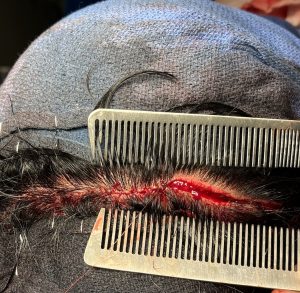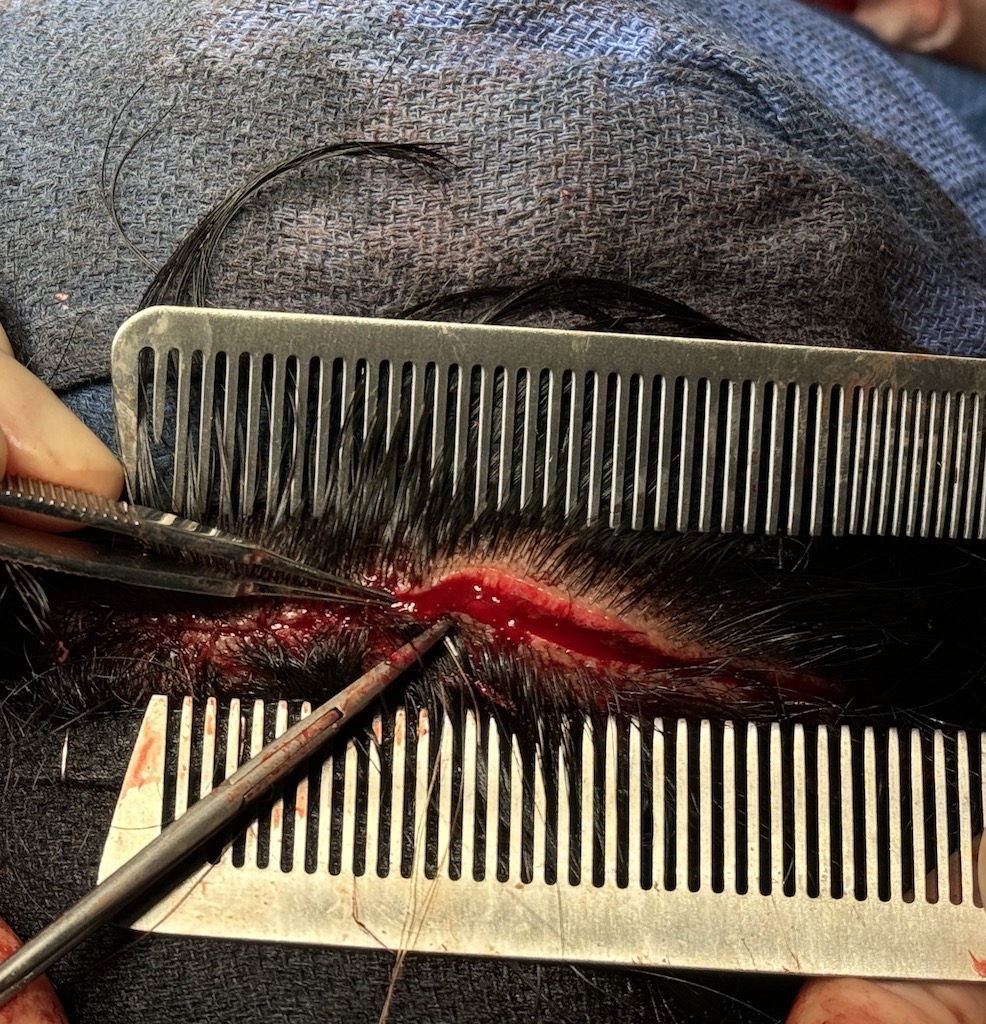Skull surgery of any form is associated with the necessity of the need for an overlying scalp incision. Of course the length of that scalp incision depends on what is being done to the skull. A component of the scalp incision is what to do with the hair, provided the patient has some or a lot of hair. For intracranial neurosurgery the hair is shaved for the obvious reason of infection prevention which could have devastating intracranial consequences. But for external aesthetic skull surgery the risks of infection is dramatically reduced and the contamination of hair is of much lower significance.
Because it is an aesthetic procedure with a very low risk of infection I choose to operate within the hair rather than shave or trim it. This is definitely more tedious on many cases but is definitely more appealing to the patient. This avoids any loss of hair and usually all or most of any incisional visibility in the early healing phase.


Because of the hair the conventional approach to scalp closures is the use of staples or metal clips. While effective, easier and much faster to apply their removal poses a problem for patients who do not live close by. As a result I have always a small resorbable suture for the final step in scalp closure. It is tedious to do but produces very fine scars in most cases and requires no postoperative care for the patient. The double comb technique helps ease the difficulty in their placement
Dr. Barry Eppley
World-Renowned Plastic Surgeon



